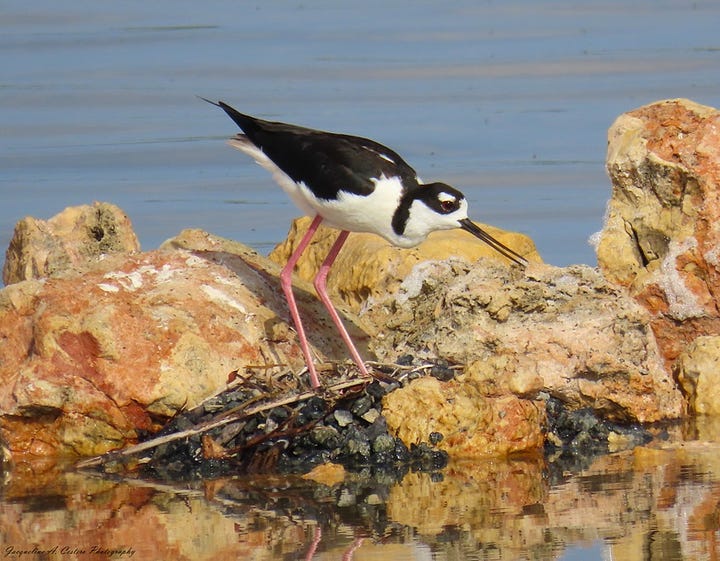The first Global Big Day of 2024 is one for the history books. After a 12-hour day and 20 sites, the Nature Explorers Team recorded 50 species.
As is customary I partnered with Wader Quest and Global Birding - both UK organizations - to share data and our mutual commitment to protecting birds and their habitats.
This year I was joined for the morning count by Elizabeth (Biz) Bell of Wildlife Management International and her colleague, Keegan Miskimmin. During this period we visited 13 sites and recorded 46 different species. I surveyed the remaining locations solo.
May marks a transition for birds in Anguilla. As many overwintering birds move northward along the Atlantic Flyway to their breeding grounds, resident species and visiting species choose Anguilla as a nesting site.


Anguilla has had an unusually wet Spring with an “Atmospheric River” event in the days leading up to the count. This means that seasonal ponds that are usually dry are flooded leaving no space for our ground nesters to lay eggs. Many nests may have been lost due to the high water levels.


Long Pond Important Bird Area was the most active nesting site with a minimum of 104 Least Tern nests and several birds engaged in courtship routines. This site has high water levels that may threaten existing nests if further storms occur.


Further, I saw many more birds forced to nest in the higher rock formations. Time will tell if this will be enough to protect the eggs.
Excessive cutting of the mangrove around several critical sites disguised as “beautification,” has been detrimental. The impact of those decisions will be felt in the upcoming hurricane season.


Despite the obstacles, I am amazed at how the tiny species find a way to raise their young. Four new Killdeer chicks found the lone dry spot on the pond to start their life. It’s ok to say “AWE” now!
I have followed this adult pair in the past and they have successfully raised several chicks against the odds.
Meanwhile, the long-legged waders were enjoying the high water levels.
Shorebirds that should have already migrated, were still present on our wetlands including sandpipers and plovers. Many were displaying breeding plumage. It will be interesting to see how long they remain here.
While the Scarlet Tanagers we saw last week didn’t hang around for the count, this beautiful Glossy Ibis did. This bird was species number 50 for the day!
At the time of publication, 7,726 species have been recorded by 63,594 birders. Our WaderQuest Team was number 3 among the International Teams recording 826 species!
Many thanks to my friends Biz and Keegan for their help on the morning count. Having Kiwi friends join the Nature Explorers Team for a Big Day is always fun!
Did you participate in Global Big Day? If so, I would love to hear about your experiences in the comments.











What a fun event! The newly hatched Killdeer chicks got a bit "awww" from me. Thank you for sharing your day. What a great count.
Love those chicks 😍 Thank you for doing such important work and sharing with us civvies! 🤩👏🏼👍🏽